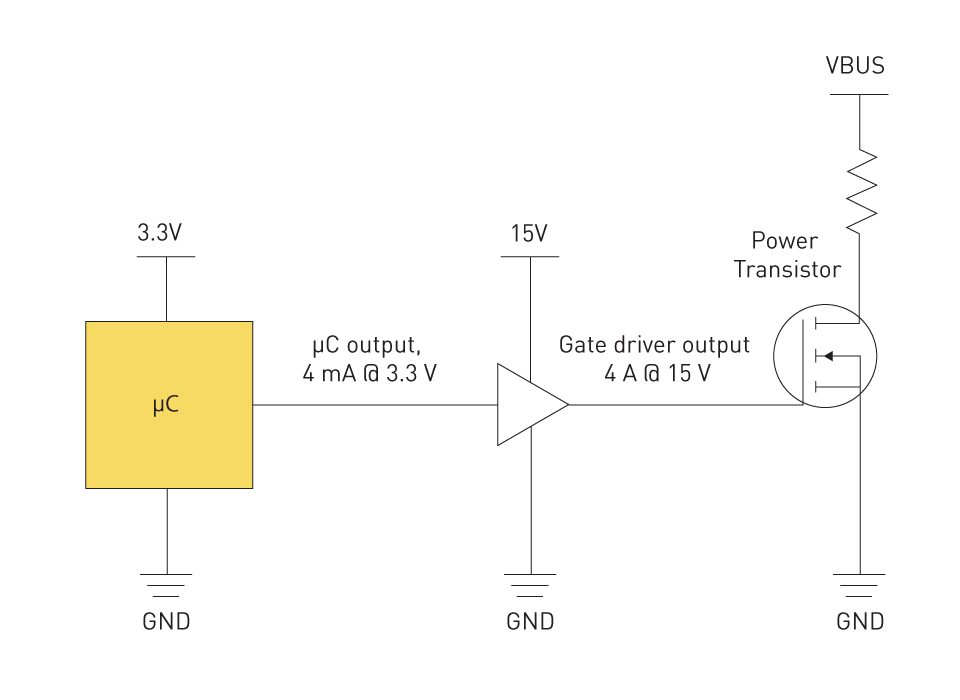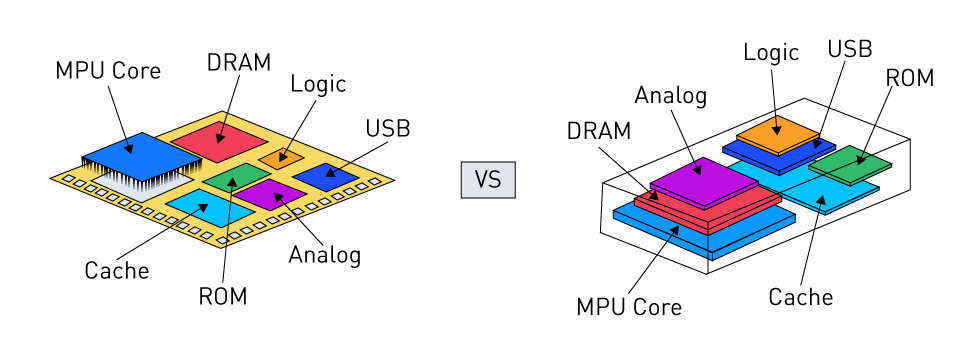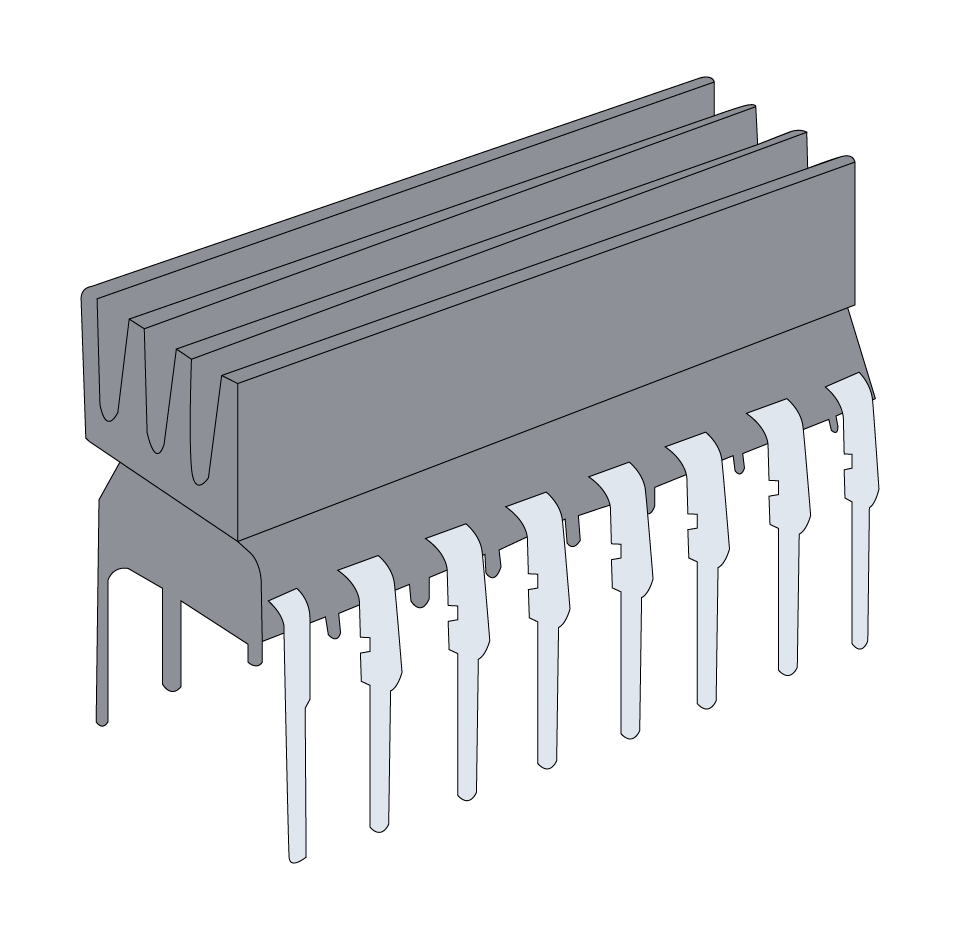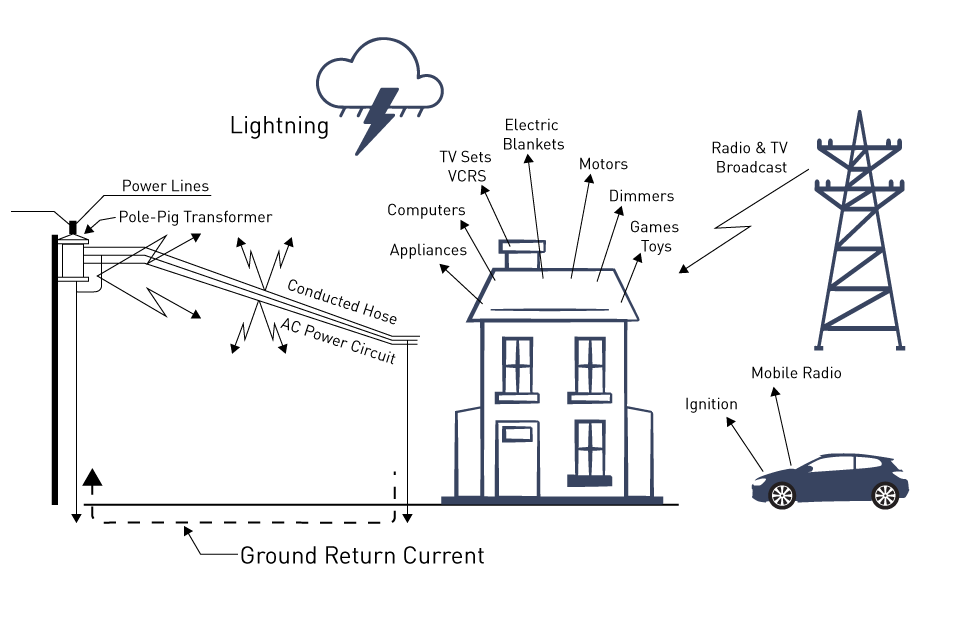Overview of Various Technologies
A number of technologies have been developed in the field of digital isolation to provide efficient isolation. These technologies, which are basically magnetic coupling, optical coupling, and capacitive coupling, each have unique properties and working principles. Choosing the right digital isolator for a particular application requires an understanding of these technologies.
Capacitive Coupling
In digital isolators, capacitive coupling refers to the process of transferring signals across an isolation barrier using capacitors. This technique makes use of the electric field created by a dielectric substance separating two conducting plates.
Operating Principle: An electric field is generated or changed when a voltage change takes place on one plate (the input side), which causes a comparable voltage change to occur on the other plate (the output side). Once recognized, this alteration is transformed back into a digital signal.
Characteristics:
High-Speed Data Transfer: Applications that require quick signal processing can benefit from capacitive coupling's high-speed data transfer capabilities.
Compact Design: This technique makes it possible to produce isolators that are tiny in size, which is advantageous for applications where space is limited.
Power Efficiency: When compared to other isolators, capacitive isolators often use less electricity.
Magnetic Coupling
Transformers or inductors are used in digital isolators to transport signals across magnetic fields in order to produce magnetic coupling.
Operating Principle: A transformer's signal is transferred over the isolation barrier when an alternating current in the primary winding creates a magnetic field that causes a voltage to be induced in the secondary winding.
Characteristics:
Robust Isolation: Magnetic coupling offers strong isolation, which is especially useful in the event of high-voltage transients.
Numerous Uses: This technique is adaptable and has a wide range of uses, including data transmission systems and power sources.
Wide Range of Applications: Magnetic coupling is exceptional at efficiently separating data and power signals.
Isolation of Power and Data: Magnetic coupling is unique in its ability to isolate both power and data signals effectively.
Optical Coupling
Optical coupling, which also known as optoisolation is a technique that combines light, light-emitting diodes (LEDs) and photodetectors to transfer signals across an isolation barrier.
Operating Principle: An LED is driven by an input signal, which causes the LED to emit light. This light passes through the isolation barrier and is detected by a photodetector at the other end. After that, the light is transformed back into an electrical signal by the photodetector.
Characteristics:
High Electrical Noise Immunity: Optical coupling is perfect for loud areas because of its strong electrical noise immunity.
Safe Isolation: Optical coupling offers a high level of safety because light is used as the transfer medium, particularly in high-voltage applications.
Limitations in Data Rate: Optoisolators may not transport data as quickly as capacitive or magnetic couplings, despite being appropriate for a wide range of applications.
Performance Comparison
It is important to possess a comprehensive understanding of the performance characteristics of different isolation technologies is essential when choosing digital isolators for certain applications. Different applications can benefit from the varied performance qualities of capacitive coupling, magnetic coupling, and optical coupling. A thorough evaluation of various technologies in comparison can assist in making well-informed selections that take into account the needs of a particular application.
Capacitive Coupling vs. Magnetic Coupling vs. Optical Coupling
Data Rate and Bandwidth
- Capacitive Coupling: Out of the three, capacitive coupling typically provides the highest data rates. Applications needing quick data transport, such as high-speed communication protocols, are a good fit for it.
- Magnetic Coupling: Magnetic coupling frequently provides moderate data speeds. It works well in cases where capacitive coupling is not necessary due to lower data rate requirements.
- Optical Coupling: When Compared with capacitive and magnetic types, the optical coupling frequently has lower data rates. Although sufficient for most uses, it might not be appropriate for extremely fast data transfer.
Isolation Strength and Voltage Endurance
- Capacitive Coupling: Although it offers strong isolation, capacitive coupling might not be the best choice for situations requiring very high voltages.
- Magnetic Coupling: Magnetic coupling is excellent for high-voltage isolation applications is magnetic coupling. Transformers used in magnetic coupling are more capable of handling higher isolation voltages than capacitive or optical isolators.
- Optical Coupling: In situations where there is electrically loud noise, optical coupling provides strong isolation. It is very resistant to interference from electromagnetic waves.E
Power Consumption
- Capacitive Coupling: Capacitive coupling is advantageous in applications where power consumption is critical because it often uses less power.
- Magnetic Coupling: When power isolation is included in the setup, there may be an increase in power usage.
- Optical Coupling: Power consumption varies; some contemporary optoisolators have energy-efficient designs.
Signal Integrity and Noise Immunity
- Capacitive Coupling: Capacitive coupling offers strong signal integrity, but in some situations, it may be vulnerable to capacitive noise.
- Magnetic Coupling: Strong noise immunity, especially against transients of high voltage, is exhibited via magnetic coupling.
- Optical Coupling: Optical coupling has exceptional noise immunity since it uses light, which is impervious to electrical noise, to provide isolation.
Size and Integration
- Capacitive Coupling: Capacitive coupling facilitates simple integration into integrated circuits and allows for compact design.
- Magnetic Coupling: Because of the physical components of the transformer or inductor, magnetic coupling is usually larger.
- Optical Coupling: Optical couplings come in a variety of sizes; while the more recent models are smaller, they have historically been larger than capacitive isolators.
Longevity and Reliability
- Capacitive Coupling: Because of its solid-state nature, it typically has a long operating life.
- Magnetic Coupling: Design affects dependability; with the right design and material choice, it can be quite dependable.
- Optical Coupling: Modern designs feature longer-lasting LEDs, but degradation over time can still affect them.
Suitability for Different Applications
The kind of digital isolator chosen will mostly depend on the particular needs of the application. Understanding the appropriateness of capacitive, magnetic, and optical coupling for diverse applications is crucial for the best possible system design. These couplings perform well in different situations.
Capacitive Coupling
High-Speed Data Communications: Capacitive couplers' capacity to handle high data rates, and this makes them perfect for purposes where quick data transfer is crucial, such as high-speed digital interfaces and communication buses.
Compact and Integrated Systems: Capacitive isolators are well-suited for space-constrained applications such as smartphones, tablets, and other portable electronic devices because of their tiny size and possibility for integration into semiconductor technology.
Power-Sensitive Applications: Because capacitive isolators use little power, they are a good choice for battery-operated devices or for situations where energy efficiency is crucial.
Magnetic Coupling
Power Isolation in Industrial Systems: Where managing greater power levels is required, magnetic isolators, especially those that use transformers are well suited for isolating power in industrial control systems, motor drives, and power supplies.
Robust Isolation Requirements: Magnetic isolators have an advantage because of their innate isolation capabilities when used in areas with a high level of electrical noise or where strong isolation from high-voltage transients is needed.
Audio and Analog Signal Applications: Transformer-based magnetic isolators can provide high-quality signal isolation in some audio and analog signal applications while being mostly employed for digital transmissions.
Optical Coupling
Electrically Noisy Environments: Because optical isolators are immune to electromagnetic interference, they are especially well-suited for usage in electrically noisy situations, such as those near power-generating equipment or in industrial settings.
Safety-Critical Applications: The robust isolation properties of optical isolators offer an extra degree of protection in medical devices and other safety-critical applications, safeguarding the user as well as the apparatus.
Isolation in Power Conversion: Optical isolators are used to provide the necessary isolation between high-voltage and low-voltage circuits in power conversion systems, particularly those in renewable energy applications.
The particular requirements and ambient circumstances of the application should direct the selection of a digital isolator type. Magnetic isolators are recommended for strong power isolation and industrial settings, optical isolators for electrically loud and safety-critical applications, while capacitive isolators are for high-speed, small, and power-sensitive applications. To guarantee the best possible performance, security, and dependability of their electronic systems, engineers and system designers need to have a thorough understanding of the advantages and disadvantages of each type of isolator.







直接登录
创建新帐号